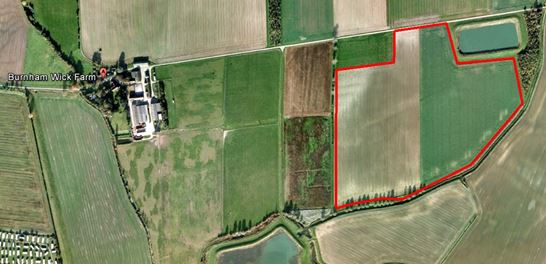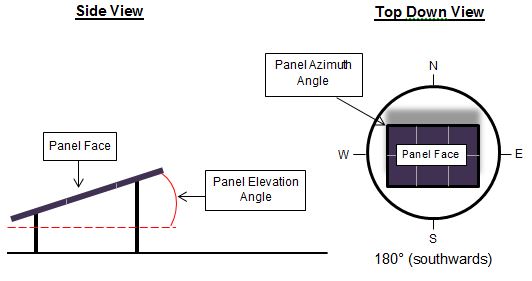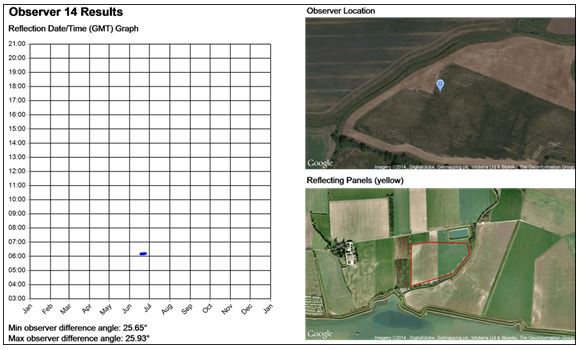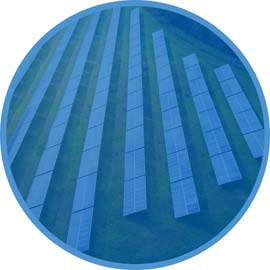Introduction
Renewable energy developer Countryside Renewables proposed a 5MW photovoltaic (PV) solar farm in southern Essex[1]. After consultation with London Southend Airport, however, concerns were raised regarding the possibility of solar reflections affecting aircraft on an approach/departure path to/from the airport.
Countryside Renewables commissioned Pager Power to address London Southend Airport concerns by completing a detailed Geometric Glint and Glare Assessment for the proposed photovoltaic (PV) solar farm.
Analysis was conducted to determine whether solar reflections would create a significant aviation hazard.
The project is now consented, and once built should generate enough electricity to supply 1,650 homes in the local area.
Background
The 22,000 panel solar farm, hereafter referred to the Burnham Wick Solar Farm, was to be sited on agricultural land east of Burnham Wick Farm, Burnham-on-Crouch in Essex.
Following initial consultation with London Southend Airport, a Glint and Glare Assessment was requested so that any effects on aviation activity could be better understood.
Pager Power was commissioned by Countryside Renewables to produce this assessment for the 5MW solar development.
PV panels produce specular reflections. This means that a percentage of the incoming light is reflected in a particular direction. An illustration of this can be seen in Figure 2 below.
The direction of the outgoing reflection is dependent on the location of the sun as well as the solar panel elevation and azimuth angle. The solar reflection could therefore, at certain times of the day, be orientated towards surrounding receptors for a period of time.
In this case a possible reflection could have impacted aviation activity over the Burnham Wick Solar Farm if viewed by a pilot.
The Challenge
Burnham Wick Solar Farm was to be located approximately 11km from the end of the runway and below the designated approach path.
London Southend Airport’s concerns related primarily to the possibility of solar reflections from the solar panels affecting pilots on approach to and departure from runway 24. This is deemed the most critical stage of a flight.
The location of the proposed solar farm with respect to the airport and approach/departure path can be seen in Figure 3 below.
The Process
The first stage in conducting the Glint and Glare assessment was to identify aviation receptors in the vicinity of Burnham Wick Solar Farm. For this, we used information that was provided to us through consultation with relevant stakeholders and reviewing available guidance.
The next step was to undertake geometric calculations to show whether a solar reflection could occur in the direction of each of the identified aviation receptors, taking into consideration the panel visibility from the receptor locations.
The geometric calculations take into account the location of the panels, their elevation angle above the horizontal and their azimuth angle i.e. the direction which the panels will be facing. The positioning of the receptors is also considered i.e. the location and height of an aircraft on the approach/departure path along with the location of the sun as it passes through the sky over a year.
After the calculations were completed, we needed to determine whether a reflection could occur, then if so, at what time and for how long. Other factors that were necessary to bear in mind were the positioning of direct sunlight in relation to the receptors’ location in addition to published studies.
The final stage of the process was to evaluate all of the above whilst drawing upon our past experience to determine whether a significant detrimental impact upon aviation safety was expected.
The Solution
Knowing that the Burnham Wick Solar Farm was positioned close to the extended centre line of London Southend Airport’s runway 24, one aviation receptor we identified was airborne traffic approaching and taking off from the runway.
Another aviation receptor that we considered was the airport’s Air Traffic Control (ATC) tower. Despite being over 11km away from Burnham Wick Solar Farm, we consider it good practice to assess potential impacts on ATC personnel.
So the two aviation receptors identified were:
- London Southend Airport’s Air Traffic Control (ATC) Tower
- Aircraft on final approach towards runway 24
Using our own Glint and Glare Analysis Tool, the locations and heights of the two aviation receptors were factored into the geometric calculations to determine whether the receptors could experience a solar reflection from a solar panel.
This information was then plotted on a chart for each receptor, like the one seen in Figure 5 below, which shows whether a solar reflection can be experienced at 3.2 nautical miles from the threshold of runway 24 at London Southend Airport.
The aircraft height was determined based on a three-degree descent path referenced to 50ft above the runway threshold.
The Result
The results showed that there would be no significant detrimental impact to safe operation of aviation activity on the approach/ departure path on runway 24, or the ATC Tower.
Following submission of the report to London Southend Airport, no objection to the solar farm was received and, subsequently, the development received planning permission. It is the first large utility-scale solar farm in the area approved by the local district council.
References
[1] The case number for the Burnham Wick Solar Farm was 14/00775/FUL, Maldon District Council.
[2] Image sourced from Google Earth © 2015 Infoterra Ltd & Bluesky, © 2015 Google
[3] Google Earth Image © 2015 DigitalGlobe. © 2015 infoterra Ltd and Bluesky. Data SIO, NOAA, US, Navy, NGA, GEBCO

Figure 1: Burnham Wick Solar Farm Area[2]

Figure 2: Specular Reflection

Figure 3: Solar farm and receptor locations[3]

Figure 4: Diagram of solar panel showing panel elevation and azimuth angle

Figure 5: Solar reflection chart from the Burnham Wick Solar Farm Glint and Glare Study
How can we help you today?



THE SECTORS WE SERVE




